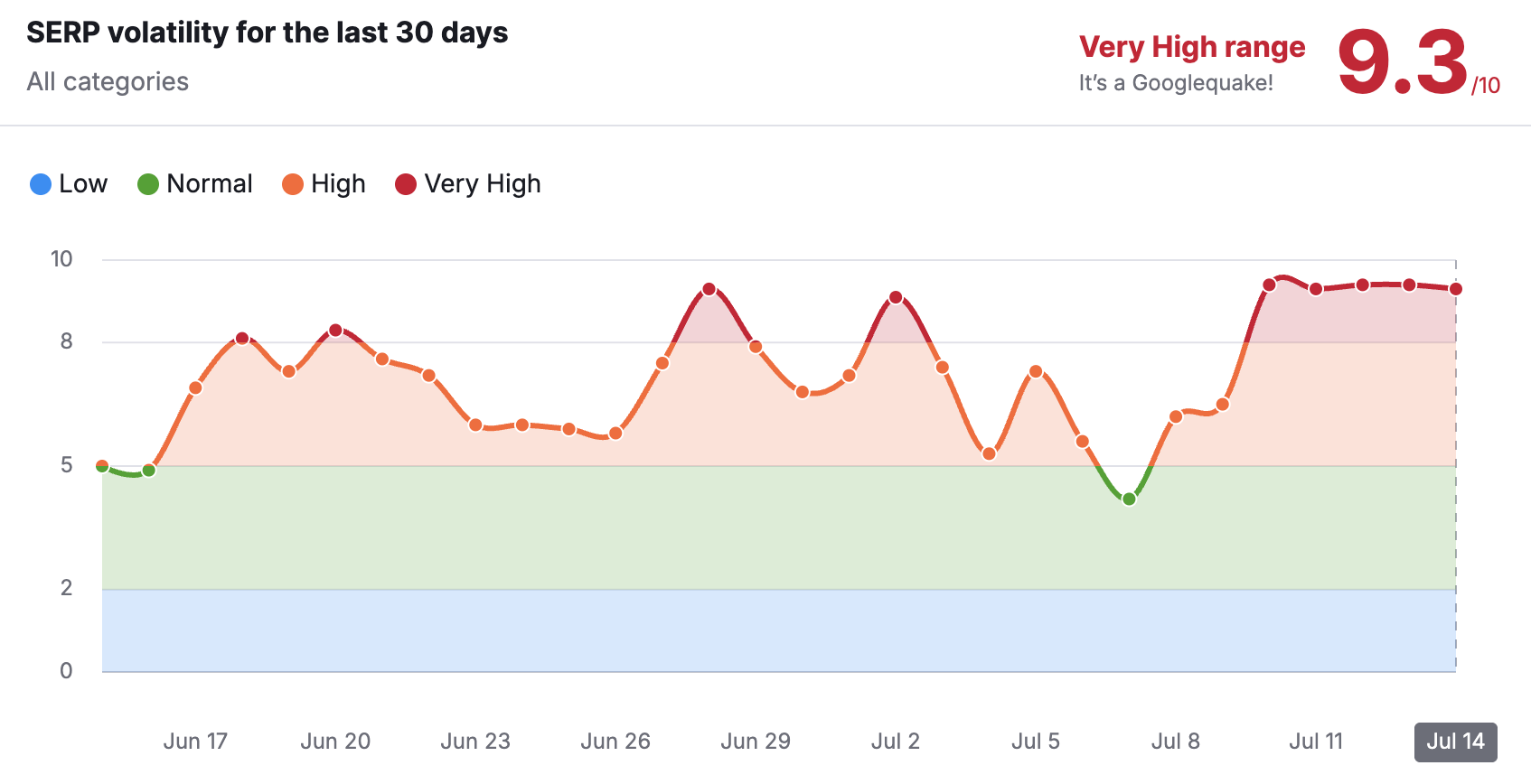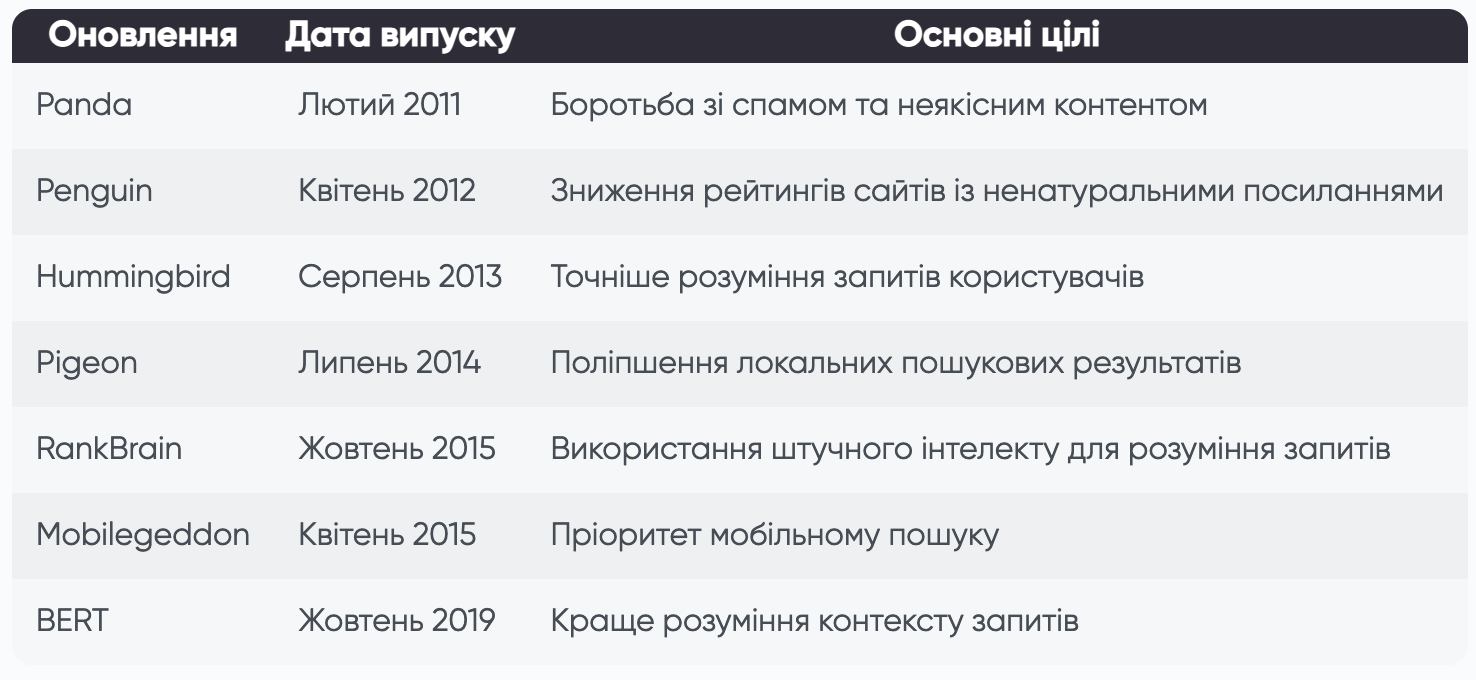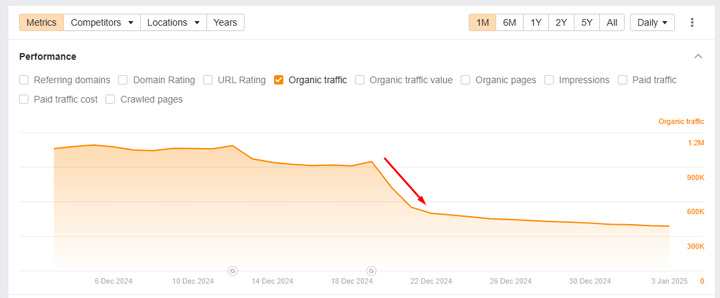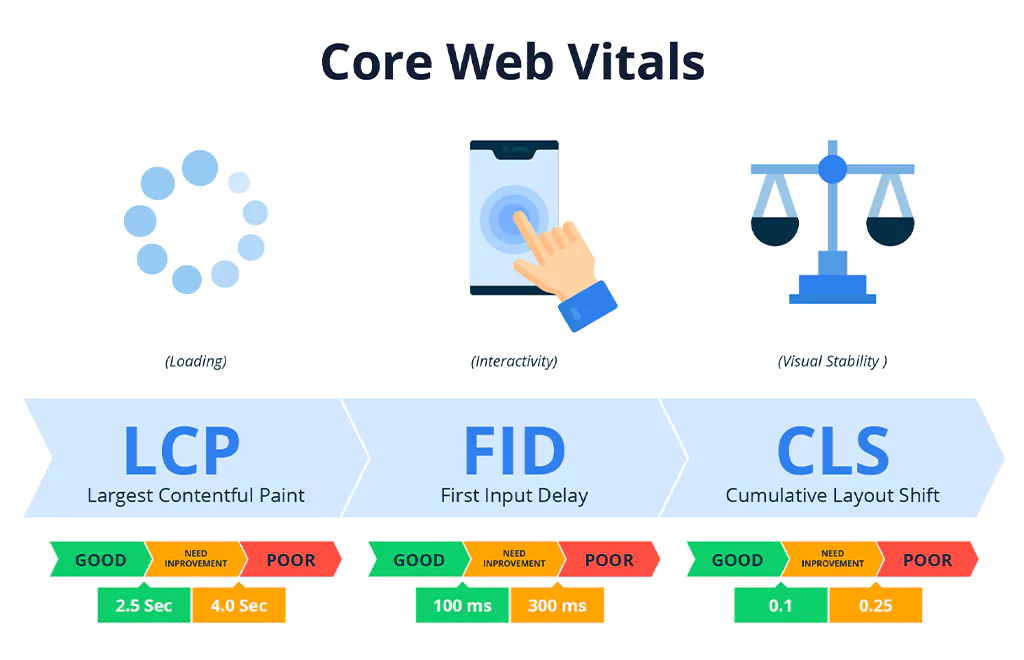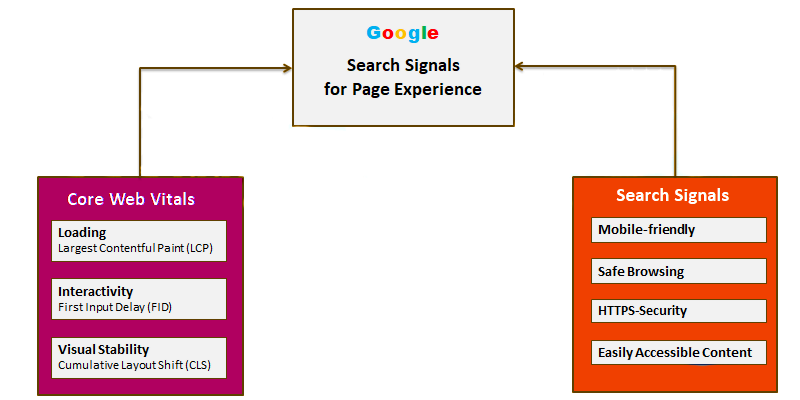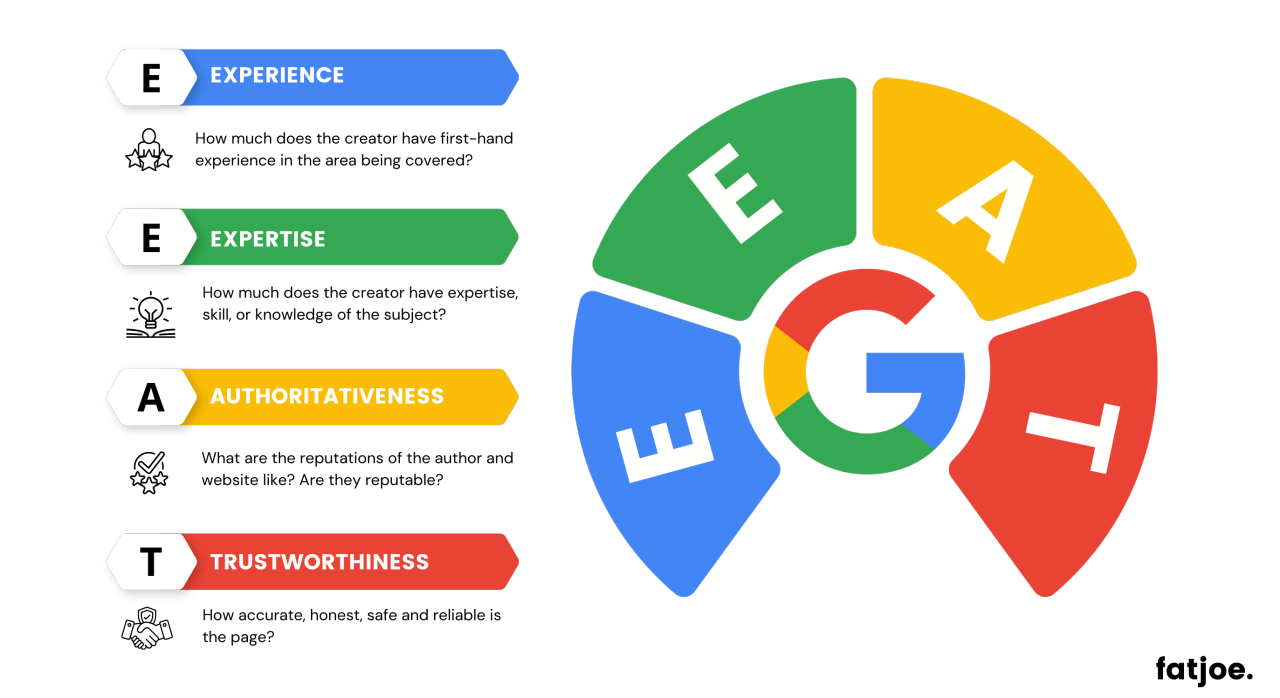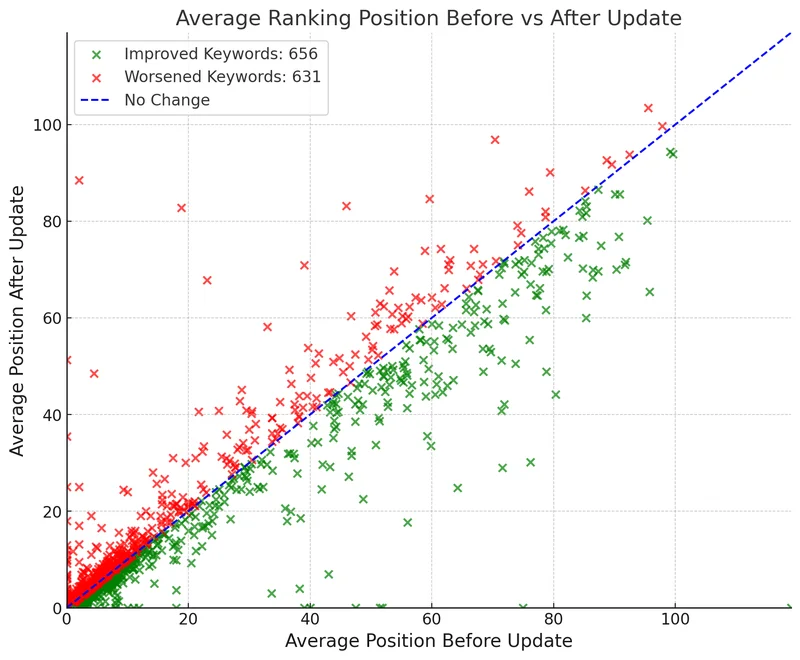
How to Survive Google Updates and Keep Your Website Traffic
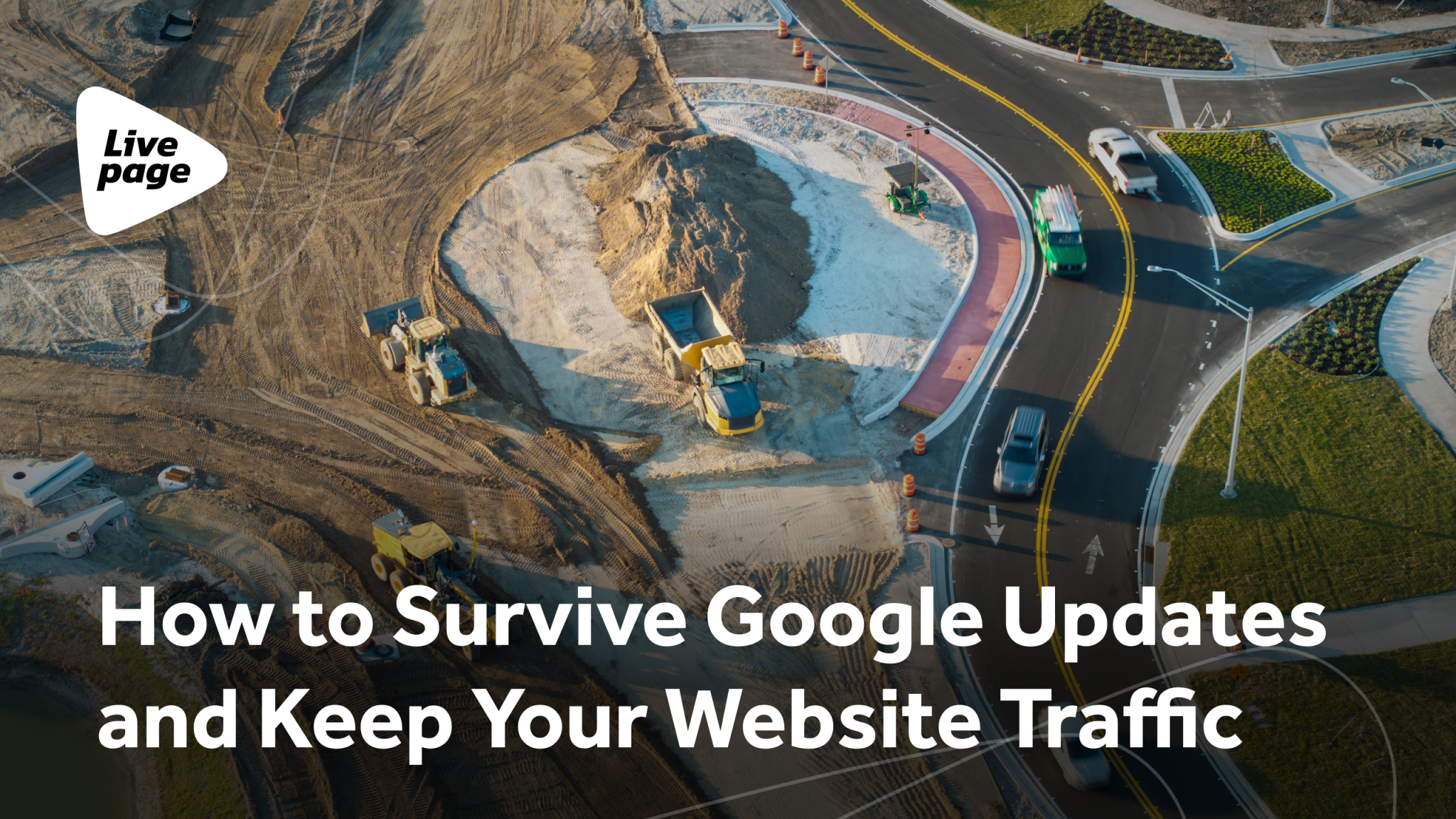
Just yesterday, your traffic was growing steadily, and today you are seeing a sudden drop in analytics. What happened? A new Google update! Algorithm updates are the kind of thing that can change the rules of the game overnight, regardless of your niche or business type. If you are not prepared, your website might lose visibility and rankings in search results, as well as potential revenue.
But updates aren’t always a disaster. In many cases, they are an opportunity to reassess your SEO strategy, reevaluate your content quality, your site’s technical health, and its overall structure. Those who adapt quickly usually come out ahead. The key is knowing what to do before, during, and after a Google update.
In this article, we will break down how Google updates work, why they affect search results so significantly, and what you can do to protect your site from traffic drops. We will also share actionable tips, common reasons for ranking drops, and a real case from Livepage on how we helped a client’s website return to the top after yet another Google update.
What Google updates are and why they matter
Google is constantly improving its ranking algorithms to deliver the most relevant, high-quality, and safe results to users. Simply put, updates are changes made to these algorithms. Some updates are minor and go almost unnoticed by most websites, while others are large-scale and bring significant changes to search results, affecting millions of websites in both a particular niche and the entire search ecosystem.
The goal of each update is pretty straightforward: to improve search results. However, Google’s “improvement” doesn’t always align with what SEO specialists or business owners consider to be one. What worked yesterday might lose its effectiveness after the next update. That’s why you should understand the logic behind these changes and adjust your SEO strategy accordingly.
As mentioned earlier, updates can target specific types of websites (medical, news, eCommerce, or HoReCa) or broader aspects that affect all niches, such as content quality (without AI interference), natural backlink profiles, user-friendly interfaces, behavioral signals, blog authors’ expertise, etc. That’s why the impact of these updates isn’t a matter of “if”, but “when” and “how severely” your site will be affected.
So, when the requirements for content quality or E-E-A-T factors change, each business’s SEO strategy must adapt individually. For some, this may mean a new approach to writing texts and adjusting content structure; for others, it’s a shift in keyword targeting or even the overall “tone” of communication with their audience. An update can force you to completely rethink your content strategy, even if it has been successful so far.
Google updates also significantly impact link building (we will talk more about this type of update later). With each update, Google becomes increasingly strict about unnatural backlink profiles. After certain updates, websites with massive irrelevant or spammy links can lose Google’s trust, and “the more links, the better” tactic stops working altogether.
Also, every update increases the importance of technical SEO and usability. Google’s algorithms are becoming more advanced at “learning” and better “understanding” how users interact with a site. A slow, inconvenient, or simply outdated website is a clear signal to Google that users don’t feel comfortable there.
Understanding how Google updates work allows you not just to react to changes in “ranking policies” but to stay ahead by building a long-term SEO strategy that won’t crumble after the next algorithm update.
Types of Google updates and how they affect a website
Google releases dozens of updates each year. Most of them are minor and barely noticeable, but some are quite significant and can reshape the balance of power in search results (for example, the March 2024 Core Update). These large-scale changes are called Core Updates as they are fundamental to how Google evaluates content quality, website authority, and relevance to user intent. They affect nearly every niche, which makes them the most noticeable.
Core Updates or fundamental updates (3–4 times a year)
These are the most comprehensive updates, impacting the overall logic of how content, website authority, E-E-A-T factors (experience, expertise, authoritativeness, and trustworthiness), and query relevance are assessed. They aren’t targeted at any specific niche but affect the entire search landscape from blogs to eCommerce sites. After a Core Update, websites that had held top positions for years may drop, while those that have long focused on content quality may see growth.
Metrics most affected by Core Updates:
- Average position for target keywords;
- Number of pages in the top 10;
- Traffic and clicks from information queries;
- CTR of pages in search results.
It is the Core Updates that most often cause the well-known waves of “rank drops”, and they are the ones you should prepare for in advance by building a long-term SEO strategy. These updates typically roll out 3–4 times a year with intervals of about 3–4 weeks.
Helpful Content Update targeting “artificial” content (1–2 times a year)
This update checks whether your content is written for people and not just for search engine bots. If your website contains a lot of automatically generated text (mostly referring to AI copywriting), SEO content that offers no real value to users, duplicate content, or bland rewrites of others’ ideas, expect a traffic drop to come your way.
Metrics most affected by the Helpful Content Update:
- Traffic and clicks from information queries (blog);
- Rankings of newly created site pages (especially articles);
- Presence of pages in Google’s search index.
Google began rolling out this algorithm more actively starting in 2022, and it continues to evolve due to the rising popularity of LLM-based AI models.
Spam Update monitoring the “gray area” of SEO (several times a year)
Google regularly updates its anti-spam filters to combat manipulative tactics in search results: mass link buying, hidden text, doorway pages, cloaking, PBN networks, etc. That’s why this type of update is the most frequent, as manipulative techniques evolve faster than global SEO trends, and Google needs to maintain a “clean” search environment.
Metrics most affected by Core Updates:
- Overall domain visibility in search results;
- Removal of links from the backlink profile;
- Drop in trust (often not immediately obvious but visible in rankings);
- Full or partial deindexing of pages.
The impact of Spam Updates is usually not widespread but more targeted, affecting specific websites that violate Google’s promotion guidelines.
Product Reviews Update focused on reviews (1–2 times a year)
This update primarily affects websites that publish reviews of products or services. Since Google values user experience and fully meeting user needs above all, it wants to see real tests, comparisons, and in-depth analysis, not just basic “roundups from the Internet.” If your content has low added value, be prepared to lose rankings.
Metrics most affected by Core Updates:
- Visibility for commercial and transactional queries;
- Rankings of pages that feature reviews and titles like “Best/Top/Review”;
- Presence of rich snippets (especially rating “carousels”).
This update is relevant for affiliate websites, online stores, and blogs that review products, tech, services, and so on. Since assessing the added value of each product is somewhat subjective, this update is not very common and typically occurs about once or twice a year.
Page Experience and Core Web Vitals as usability signals (updated gradually)
This is not an “update” in the classic meaning, as mentioned earlier, but rather a continuous shift in ranking priorities in favor of websites with good usability. These updates assess various metrics that directly affect the user’s comfort when using a website, such as loading speed, interactivity, layout stability on both desktop and mobile devices, etc.
Metrics most affected by Core Updates:
- Overall rankings for search queries on both mobile and desktop devices;
- Core Web Vitals indicators in Search Console;
- Presence of pages in Google’s search index.
Their impact is not always immediate but tends to accumulate over time: poor Page Experience leaves your site vulnerable to ranking drops.
So, each type of update affects your site’s rankings in its own way. If you consistently work on content quality, natural and high-quality backlinks, and technical optimization, most updates won’t be a threat. However, if there are weak spots, even minor ones, Google will find them. The only question is when, and that depends entirely on the type of update you are hit by.
Why sites drop after Google updates
After the release of a major update, you will usually see one of three things: growth, stability, or a drop. And while growth is a nice bonus, a drop almost always causes panic. You need to understand that Google doesn’t penalize “just because” but shifts its priorities. So, if your site loses traffic after an update, it simply means it no longer aligns with the search engine’s updated requirements. Here are the most common reasons for drops after a Google algorithm update:
Low-quality content
Sites with shallow articles rewritten from other sources, lacking analytical depth or original perspective, are the first to get hit by Helpful Content or Core Updates, especially if there are a lot of such pages. Many sites have dozens of “empty” articles created to target specific keywords but not to help the user, and it’s exactly these pages that often drag the overall site ranking down.
Missing or weak E-E-A-T factors
Google increasingly favors sites that clearly show their expertise and authority in a given niche. If your site lacks author bylines, author profiles, expert input, or if your niche is “sensitive” (like health or finance), the absence of E-E-A-T factors can seriously undermine your site’s credibility.
Problematic link building
Spammy or unnatural links acquired in large volumes, outdated PBNs, or backlinks from irrelevant sites – all of these are red flags to Google that you are trying to manipulate its algorithms. If your site has questionable referring domains during an update, or if there is a sudden surge of low-quality backlinks (possibly due to competition or black-hat marketing tactics), there is a high risk of getting caught in a Spam Update filter.
Technical issues and a slow website
Even great content won’t “take off” if your site loads slowly, has a poorly optimized mobile version, or confuses users with basic navigation. With each new update, the technical side becomes increasingly important. Page Experience, Core Web Vitals, and mobile responsiveness are critical for maintaining stable rankings.
Outdated structure or keyword cannibalization
Sometimes, ranking drops aren’t caused by a “penalty” at all, but by Google reinterpreting the real user intent. If your content overlaps and cannibalizes queries with other pages, or if the site structure is highly illogical, Google may choose what it sees as the “improved” page and demote the others (we broke this down in this article).
Template-based or AI-generated content
Recent updates have shown that just publishing generated or templated content isn’t enough. If the content has no practical value, offers no unique user experience, or simply repeats what’s already in the search results, it will lose rankings. Algorithms are learning to detect not only machine-written language, but also whether such content is helpful to users.
How to prepare for Google updates and reduce risks
No website is immune to the effects of algorithm updates. However, this doesn’t mean you should just sit and hope to get lucky. There are steps you can, and should, take to minimize the risk of losing traffic after a Google update, or better yet, to actually grow when the next update rolls out:
Run regular content audits
Even if your site looks solid, it’s worth periodically reviewing content that is outdated, duplicated, lacks value, or contains factual inaccuracies. Articles that bring in no traffic and meet no new standards should be either updated or removed altogether.
Pro tip: About once a quarter, compile a list of low-performing pages based on traffic, time on page, and bounce rate, and check whether they align with Google’s expectations and current content trends.
Build E-E-A-T (especially in YMYL niches)
Add author names and create dedicated author profile pages. Include citations and references within articles to show your expertise. For example, if a doctor runs your blog, consider showcasing their diploma, linking to their achievements, and highlighting medical conferences they have attended. If you offer financial advice, explain why users should trust you. Google is actively seeking evidence that individuals with genuine expertise in the topic write your content.
Pro tip: Create an “About the Expert” page and link to it from every blog post written by that author.
Update your content structure and internal linking
Your site’s information architecture should be logical: group articles into categories, add internal links between related topics, and create content clusters or hubs (also known as the pillar strategy). This helps search algorithms better understand how your pages are connected.
Pro tip: Use query cannibalization analysis to avoid having your pages compete against each other.
Regularly check your site’s technical condition and Core Web Vitals
Technical optimization is no longer just a bonus but the bare minimum. Loading speed, mobile responsiveness, and proper mobile functionality have a direct impact on your rankings.
Pro tip: Use tools like PageSpeed Insights, Search Console, and WebPageTest to stay on top of your Core Web Vitals and respond to changes in time.
Monitor the quality of your link profile
Try to check your backlinks for spam or irrelevant domains every 1–2 months. Even if you didn’t buy shady links, a competitor might have done it to sabotage you, or random spammy links may have appeared on their own. If you spot a problem, use Google’s Disavow Tool to quickly reject those links.
Pro tip: Don’t chase link quantity. It’s better to have 5 relevant, high-quality backlinks than 50 junk ones.
What to do if your traffic dropped after a Google update
Even if you have been consistently working on your site, a drop in traffic after an algorithm update is not always the result of your mistake. Sometimes it’s simply inevitable. The key is not to panic, but to act methodically. A traffic dip is just a signal that Google has shifted its priorities. Your job now is to figure out exactly what changed:
1. Make sure the drop is actually related to an update
Before making any changes, analyze the dates when your traffic declined and compare them with Google’s official update announcements. It’s important to determine whether the issue is really algorithmic, or if it might stem from something else, like recent technical changes to your site, seasonal trends, or shifts in product/service demand (e.g., a competitor started aggressively promoting their offerings).
Pro tip: Don’t rely solely on Search Console. Use tools like Semrush, Ahrefs, or Serpstat to compare trends and see what is really happening in the market.
2. Focus on the content pages that dropped
Clearly identify which pages have lost rankings. Look for patterns as they may all be written in the same style (templated), have the same structure (indicating possible keyword cannibalization), contain AI-generated text, or duplicate content from other sources. If the problem is obvious, it is better to update or even remove such pages.
Pro tip: Track not only ranking drops but also visibility loss across specific keyword clusters with tools like SerpStat or SE Ranking.

3. Audit your E-E-A-T factors
Evaluate how authoritative your site is: do you have author pages, contact details, references to sources, statistical data, and other signals of expertise? These factors are especially critical for websites in the medical, financial, or legal niches that directly affect user well-being.
Pro tip: If you work in one of these sensitive niches, try to build more external credibility (get interviewed, speak at events, write for third-party platforms, or earn media mentions).
4. Revisit technical optimization and usability
Sometimes ranking drops due to a decline in the overall Page Experience. For example, your mobile layout may be broken, or a new page template may have made site navigation harder. Analyze loading speed, mobile responsiveness, and visual stability (all Core Web Vitals metrics).
Pro tip: Browse through your website like a regular user to see how easy it is to find answers, whether your CTA is visible, and whether everything loads smoothly.
5. Don’t rush to overhaul everything at once
One of the most common mistakes is to instantly revamp the entire site or delete dozens of pages. Updates can last several weeks to a month, and during that time, the algorithm may be observing how your site performs over time. If you rush into drastic changes, you risk making things worse.
Pro tip: Try to pinpoint and address only the problematic areas by checking updates via A/B testing, monitoring their impact, and only then making final decisions.
How Livepage recovered a website after a Google update drop
Let’s take a look at a real example of how to respond correctly when traffic drops after a Google update. One of our cases involves SEO promotion for the SaaS platform Stripo.email, a service specializing in creating email template designs.
We encountered Google updates constantly during this project. The site operates in a highly competitive niche, features a large amount of content primarily in English, and nearly every major algorithm update has affected overall traffic dynamics. The most critical situation occurred after one of the Core Updates, when we saw the steepest traffic drop during our entire collaboration.
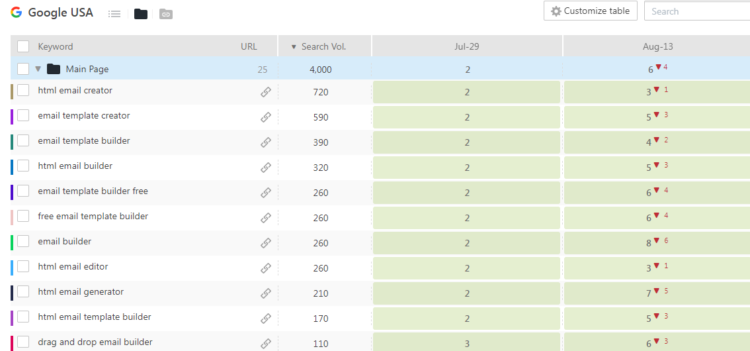
To determine the exact cause of the traffic loss, we conducted an in-depth content and technical audit. We identified over 200 template pages that offered no unique value, as they shared the same format and lacked optimization for search queries, effectively appearing as “technical duplicates.” This created the very “lack of added value” effect that a Core Update could interpret as a drop in overall site quality and lower rankings.
In addition, we spotted several other important issues on the site, such as improperly configured hreflang tags for language versions, technical errors in the blog, indexing problems for certain page types, and more. Overall, it was a complex issue that required a systematic approach from the team. So, in collaboration with the client, we took the following steps:
- Identified all weak pages with zero or minimal traffic (some were deleted, some were blocked from indexing, and the rest were optimized);
- Optimized the internal structure (we reorganized page navigation, updated category priorities, implemented manual interlinking, and created meta tag templates);
- Fixed technical issues by configuring proper hreflang and canonical tags and removing duplicate content;
- Developed an updated content plan focused solely on uniqueness and reader value, not quantity, for broader semantic coverage.
As a result, we didn’t have to wait long. After the next Core Update, the site quickly returned to organic search and showed growth not only in traffic but also in conversion rate and sales.
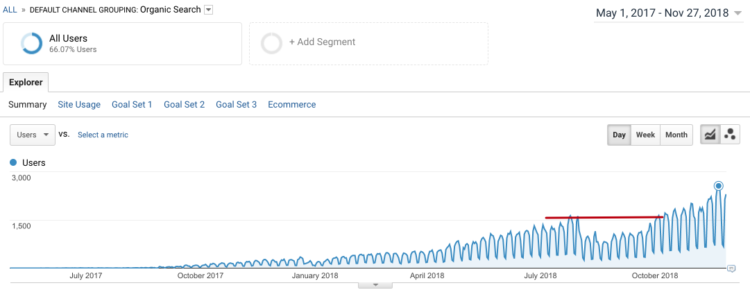
Moving forward, we kept adapting the site to meet new algorithmic requirements. Due to this systematic approach, the following updates no longer caused any major traffic drops for the client.
Key takeaways
You should keep in mind that Google is constantly changing the rules of the game. Algorithms are becoming more sophisticated. If in the past you could break into the top search results just by building links or publishing a lot of content, that’s no longer enough. Every update is essentially a stress test for your website’s resilience and integrity, as content, usability, performance, and expertise all factor into how Google perceives your site.
Today, SEO isn’t about one-off actions. It’s about working consistently across all risk zones from content to server settings, from your editorial calendar to backlinks. And most importantly, it’s about understanding Google’s logic, not just the rules it sets.
Do you want to be sure the next update doesn’t hurt your rankings?
The Livepage team has been doing SEO in highly competitive niches for over 12 years. We have helped projects recover from Google penalties, scaled startups from scratch, and guided businesses through major setbacks. We know how Google works and how to build a long-term strategy that is not affected by algorithm updates. Contact us, and we will help your business reach the top.





